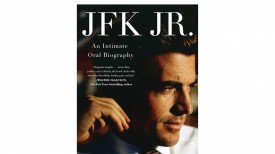Renaissance Astronomy Books With Hidden Texts Find New Home at RIT

Discover hidden knowledge within two recently donated Renaissance astronomy books at the Rochester Institute of Technology. One book holds traces of erased text, arousing curiosity among scholars.(Photo : Unsplash/Alex Boyd)
Two astronomy books from the Renaissance era were recently donated to the Rochester Institute of Technology (RIT), a university in New York State. The intriguing possibility of an undiscovered treatise lies within the pages of a Renaissance astronomy book. One of these books appears to be a palimpsest, containing traces of a previous work partially or entirely erased, sparking curiosity and excitement among scholars.
Vellum was a valuable and expensive material in the Renaissance era. It is a fine parchment made from animal skins. People often reused this parchment to economize, erasing the existing text to make way for new content.
Decoding Renaissance Astronomy Insights
Astronomy experts speculate that there may be an older hidden text beneath the text of one of the donated books, which is a 15th-century version of a work by 13th-century scholar and monk Johannes de Sacrobosco. Imaging science students at RIT are set to unravel the mystery by deciphering the erased text.
Sacrobosco's "Sphaera" comprises four chapters exploring the spherical nature of the universe, heavenly spheres, observations of the heavens from different locations (highlighting the Earth's spherical shape), and an elucidation of Ptolemy's planetary motion and eclipse theory.
The second donated book is a well-known 1543 publication by Polish scientist Nicolaus Copernicus. Copernicus transformed astronomical thinking by asserting that the sun, not Earth, is the center of our solar system using mathematical demonstrations and sky observations. This ground-breaking concept refuted the prevalent wisdom of the period. It was put forth generations before the telescope was created.
READ ALSO: 5 Surprising Services the Boston Public Library Offers
The combined presence of the two books showcases the swift evolution of astronomical science during the Renaissance. Sacrobosco's 15th-century Latin work placed Earth as the center of the cosmos, per the ancient theory established by Claudius Ptolemy. In contrast, Copernicus challenged conventional thinking in the 16th century and proposed that the sun is the center of the universe. This stark shift reflects the dynamic progression of astronomical understanding during this transformative period.
Copernicus' work marked a crucial moment in the history of astronomy. "De revolutionibus orbium coelestium" builds upon existing ideas, including those of Greek astronomers like Plato and Eudoxus. Despite inaccuracies in his model, such as planets moving in perfect circles, Copernicus laid the groundwork for future astronomers like Tycho Brahe and Johannes Kepler to refine planetary motions using his ground-breaking insights.
Preserving Knowledge for Future Generations
Donor Irene Conley, whose late brother Martin Harris attended RIT in the mid-1960s, expressed joy at the books finding a home where they would be actively studied. She emphasized her family's decision to contribute these texts to a place of learning rather than selling them to a private collector, highlighting the university's commitment to utilizing the texts for advanced work and research.
The donated books have become part of RIT's Cary Graphic Arts Collection, recognized as one of the top libraries in the world for studying the background and current trends in visual communication. These donated books not only offer an insight into the early days of astronomy but also serve as tangible artifacts that demonstrate the vibrant intellectual life of the Renaissance era.
RELATED ARTICLE: Stargazing Adventures: The Best New Books for Mastering the Night Sky in 2024
© 2023 Books & Review All rights reserved.
Popular Now
1
Books to Read After 'Fourth Wing': Top Picks for Fantasy and Romantasy Fans

2
‘The Secret Public’ by Jon Savage Book Review: An Insightful Look Into the LGBTQ Influence

3
Stephanie Regalado's 'If They Only Knew' Column Is Now A Book, Unleashing 60 Anonymous True Stories to Empower Women

4
'No Wire Hangers' Scene That Almost Did Not Happen: New Book Reveals Faye Dunaway's Struggles

5
Rare First Edition of Aphra Behn's Novel 'Oroonoko' Discovered in Kent: A Historic Literary Find

Latest Stories
Book Reviews
‘The Secret Public’ by Jon Savage Book Review: An Insightful Look Into the LGBTQ Influence

Book News
Stephanie Regalado's 'If They Only Knew' Column Is Now A Book, Unleashing 60 Anonymous True Stories to Empower Women

Book News
'No Wire Hangers' Scene That Almost Did Not Happen: New Book Reveals Faye Dunaway's Struggles

Book Reviews
‘The Perfect Couple’ by Elin Hilderbrand Book Review: A Captivating Summer Mystery

Book News
New Book ‘The Franchise’ Reveals Penguins President Kyle Dubas’ ‘Biggest Mistake’ as Maple Leafs GM











